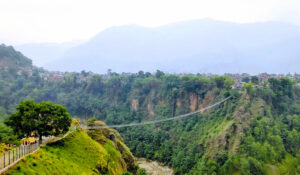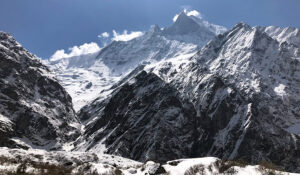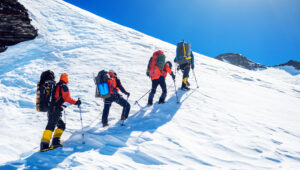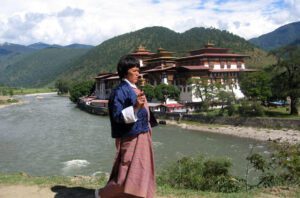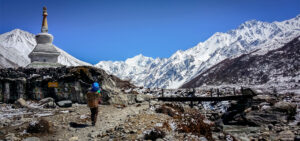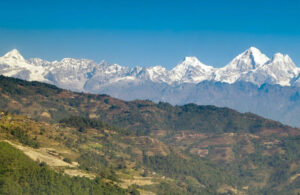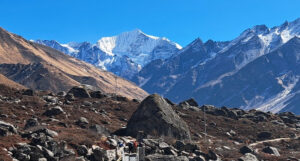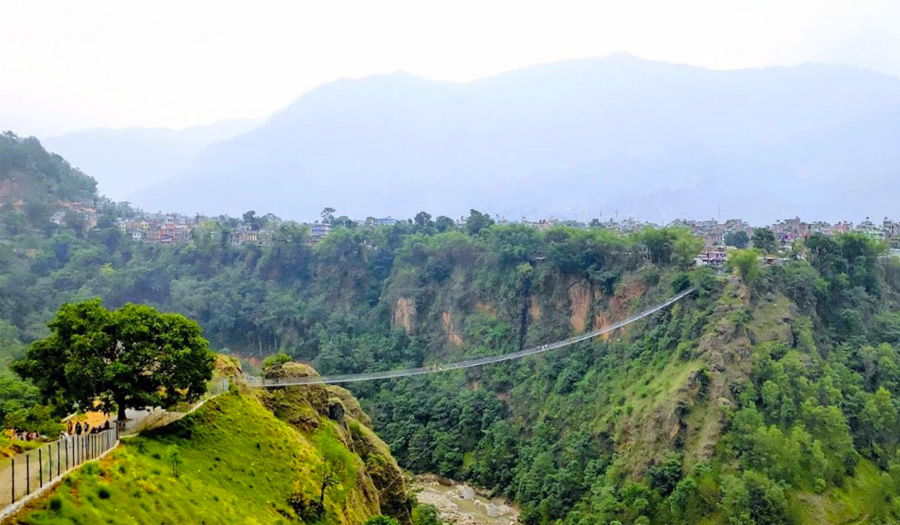
Nepal, a small yet remarkably diverse country nestled in the heart of the Himalayas, offers an extraordinary range of travel experiences. From snow-covered peaks and ancient temples to vibrant festivals and lush jungles, Nepal attracts adventurers, culture lovers, spiritual seekers, and families alike. Once known mainly as a backpacker destination for hardcore trekkers, Nepal’s tourism landscape has transformed into a welcoming haven for all types of travelers—regardless of age, background, or travel style.
Whether you’re seeking adventure, culture, wildlife, wellness, or authentic village life, Nepal truly has something for everyone. Each visitor takes home a unique story and a memorable experience shaped by Nepal’s warm hospitality and natural beauty.
Adventure tourism is the pulse of Nepal, attracting thrill-seekers and explorers from every corner of the world. The country’s rugged landscapes, towering Himalayan peaks, and wild rivers create an unmatched arena for adventure.
Home to eight of the world’s 14 highest mountains—including Everest, Kanchenjunga, Lhotse, and Makalu—Nepal offers legendary trekking and mountaineering experiences. Classic trails like Everest Base Camp, Annapurna Circuit, Langtang Valley, and Manaslu region take travelers through alpine forests, glacial valleys, ancient Sherpa settlements, and panoramic high-altitude viewpoints. For many, reaching destinations like Gokyo Ri, Thorong La Pass, or Kala Patthar becomes a life-changing milestone.
Nepal is also a hotspot for extreme sports. Pokhara’s Sarangkot is one of the best paragliding sites in the world, offering soaring views of the Annapurna Range and Phewa Lake. Adventure lovers can test their courage with the world-famous Kushma and Bhote Koshi bungee jumps, canyon swings, and canyoning adventures. Himalayan rivers such as the Trishuli, Seti, Bhote Koshi, and Karnali provide exceptional white-water rafting and kayaking experiences—from family-friendly floats to intense grade IV–V rapids.
Mountain biking, ultra-trail running, rock climbing, zip-lining, sky cycling, and ultralight flights add to Nepal’s variety of adrenaline activities. Whether you’re seeking a challenging expedition or a fun outdoor thrill, adventure tourism in Nepal offers endless possibilities for unforgettable excitement.
Nepal is a living cultural museum—where ancient traditions blend seamlessly with modern life. As the meeting point of Hinduism and Buddhism, the country is enriched with temples, monasteries, stupas, palaces, and centuries-old rituals.
The Kathmandu Valley is the heart of cultural tourism. Cities like Kathmandu, Bhaktapur, and Lalitpur (Patan) showcase intricate pagoda temples, royal courtyards, wooden carvings, and artisan workshops where centuries-old crafts still thrive. Seven UNESCO World Heritage cultural sites—including Swayambhunath Stupa, Pashupatinath Temple, Boudhanath Stupa, Patan Durbar Square, and Bhaktapur Durbar Square—offer immersive cultural journeys.
Nepal’s ethnic diversity makes its festivals and traditions vibrant and unique. Travelers can experience colorful celebrations such as Holi, Bisket Jatra, Indra Jatra, Lhosar, Maghi, Chhath, Tihar, and Dashain—each reflecting stories of gods, ancestors, and local heritage.
Traditional dances, handmade crafts, pottery, thangka paintings, metalwork, and wooden architecture reflect Nepal’s artistic soul. Pilgrims and culture enthusiasts also visit sacred sites like Lumbini (birthplace of Lord Buddha), Muktinath, Janakpur, and Tengboche Monastery.
Cultural tourism in Nepal is more than sightseeing—it’s a journey into spirituality, tradition, and the warmth of Nepali hospitality.
Eco-tourism in Nepal promotes responsible travel that conserves the environment and supports community wellbeing. The nation’s diverse ecosystems range from tropical jungles in the Terai to alpine meadows and Himalayan glaciers, making it one of the world’s richest biodiversity hotspots.
Visitors can explore protected areas such as Chitwan National Park, Bardia National Park, Sagarmatha National Park, Langtang National Park, Shey-Phoksundo National Park, and Annapurna Conservation Area. Jungle safaris offer chances to see endangered species like the Bengal tiger, one-horned rhinoceros, red panda, snow leopard, gharial crocodile, and hundreds of bird species.
Eco-tourism experiences include guided nature walks, birdwatching tours, butterfly trails, conservation workshops, organic farm visits, and sustainable trekking routes. Many eco-lodges operate with renewable energy, composting systems, and community partnerships to reduce environmental impact.
Trekkers can participate in “leave no trace” programs, support conservation projects, and learn about Himalayan ecosystems and local wildlife. Eco-tourism helps protect fragile mountain environments and empowers communities that depend on nature for their livelihood.
Community-based tourism in Nepal offers a meaningful, immersive travel experience that directly benefits local families. Instead of staying in commercial hotels, visitors stay in traditional homestays, where they become part of daily village life.
Guests can participate in cooking sessions, traditional farming activities, handicraft learning, cultural performances, and storytelling sessions. Homestay communities like Ghale Gaun, Panauti, Sirubari, Nagi Village, Patlekhet, and Indigenous Tharu, Gurung, Magar, and Tamang settlements offer rich cultural exchanges.
Community Homestay Network and local cooperatives help manage ethical, sustainable tourism practices, ensuring fair income distribution and empowering women and marginalized groups. This form of tourism supports education, village infrastructure, and cultural preservation.
For travelers seeking authenticity and connection, community tourism provides heartfelt memories and a deeper understanding of Nepal’s diverse lifestyles.
Nepal is considered a spiritual sanctuary, ideal for travelers seeking peace, healing, and self-discovery. Rooted in ancient Hindu and Buddhist teachings, the country offers countless opportunities for meditation, yoga, mindfulness retreats, and holistic therapies.
Monasteries in Kopan, Pharping, Namobuddha, and Lumbini invite visitors for guided meditation courses and spiritual teachings. Yoga studios and wellness centers in Kathmandu and Pokhara offer retreats, sound healing, Reiki, Ayurveda, chakra balancing, and detox programs.
Many travelers embark on spiritual pilgrimages to sacred places such as Pashupatinath, Muktinath, Boudhanath, Gosaikunda, Pathibhara, and numerous Himalayan meditation caves historically used by yogis and monks.
The Himalayan environment—calm lakes, quiet forests, fresh mountain air, and panoramic views—creates the perfect setting for inner transformation. Wellness tourism in Nepal supports mental clarity, physical balance, and emotional rejuvenation.
Rural tourism connects travelers to Nepal’s peaceful countryside, where traditional lifestyles remain unchanged for generations. Villages surrounded by terraced fields, forests, and mountain views offer a serene escape from urban life.
Travelers can observe and participate in farming activities such as rice planting, harvesting, cattle herding, organic gardening, and beekeeping. Villages like Ilam, Dhading, Lamjung, Kaski, Dolakha, Mustang, and Kavre are becoming popular rural tourism hubs.
Rural tourism promotes sustainable development by creating local employment and reducing urban migration. Visitors also learn about indigenous knowledge systems, traditional architecture, herbal medicines, and unique cultural practices.
This type of tourism is ideal for travelers looking for simplicity, nature, and the warmth of rural hospitality.
Gastronomy tourism in Nepal celebrates the country’s rich culinary heritage, influenced by geography, culture, and ethnic diversity. Food enthusiasts can explore unique regional cuisines—from Himalayan meals to Terai flavors.
Travelers can enjoy mokthuk and skewers in Mustang, Thakali platters in Jomsom, Sherpa stews in Khumbu, Newari feasts in Kathmandu Valley, and Maithili sweets in the southern plains. Each dish reflects local ingredients, climate, and culture.
Food tours, cooking classes, and market visits introduce travelers to spices, fermentation techniques, and traditional cooking practices. Highlights include tasting yak cheese, butter tea, wild honey, organic teas from Ilam, and handmade breads.
Popular dishes like dal bhat, momo, sel roti, yomari, bara, kwati, and dhido give visitors a flavorful journey into Nepal’s identity. Gastronomy tourism is not just about eating—it’s about understanding stories, family traditions, and cultural roots.
Volunteer tourism combines travel with meaningful service, allowing visitors to contribute to community development, conservation, and education. Many travelers join programs that align with their skills and interests.
Opportunities include:
Responsible volunteer organizations ensure that volunteers work ethically and that projects create long-term benefits rather than dependency. Voluntourism fosters cultural exchange, skill-sharing, and global friendships.
For travelers seeking purpose-driven experiences, volunteering in Nepal is a powerful way to make a positive impact while exploring its beauty.

